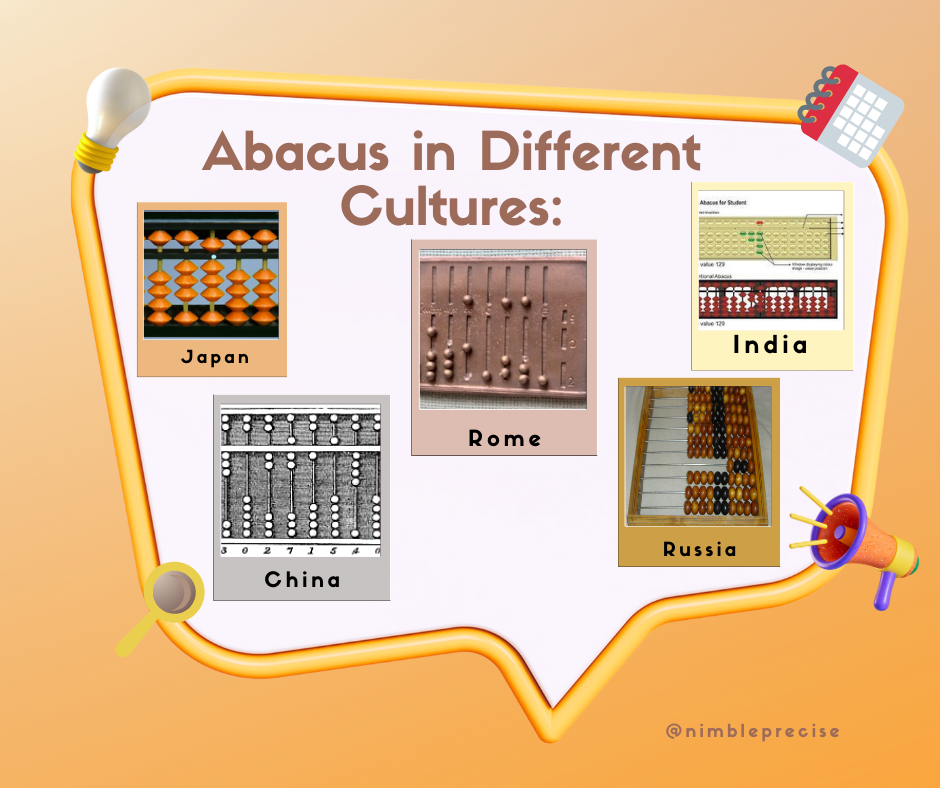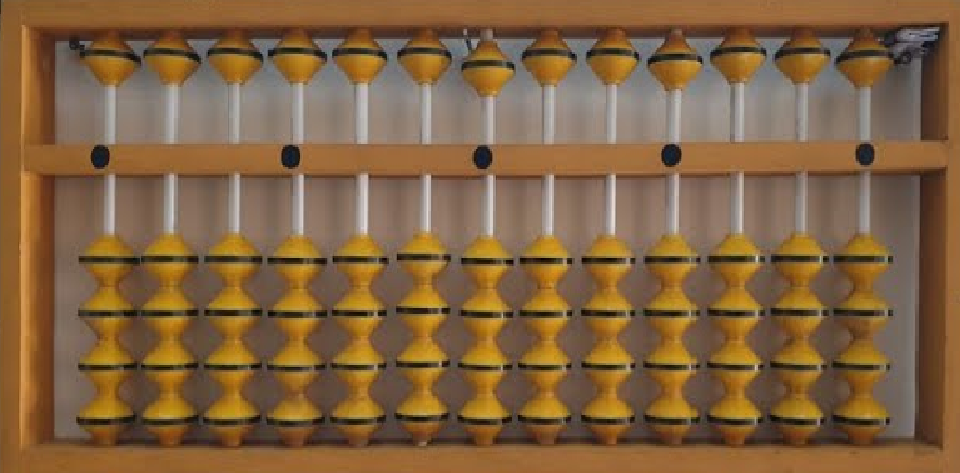History of Abacus

The ancient Abacus tool in the Digital age.
An Abacus is a manual calculating tool that consists of beads or disks that can be moved up and down on rods or wires. It's used for performing arithmetic operations such as addition, subtraction, multiplication, and division. The abacus is often used as a visual aid in teaching basic math concepts, particularly in cultures where it has a historical significance.
The Abacus, an ancient calculating tool, has a rich history spanning thousands of years and multiple civilizations. Its origins can be traced back to ancient Sumeria, where a simple counting device using lines drawn in sand was used around 2700-2300 BCE. The modern form of the abacus, with beads on rods or wires, is believed to have originated in ancient China around the 2nd century BCE. Known as the suanpan, this Chinese abacus had two beads on each rod in the upper deck and five beads on each rod in the lower deck. The abacus spread to other civilizations, including the Roman Empire, where it was used for accounting and calculations. Despite advancements in technology, the abacus is still used today in some parts of the world as a teaching tool and for performing quick calculations, showcasing its enduring legacy and importance in the history of mathematics.

In today’s digital age, the Abacus still holds relevance, albeit in a different capacity than its historical usage. While electronic calculators and computers have largely replaced the abacus for complex calculations, it still serves as a valuable tool for learning and mental arithmetic development, especially for young learners. The tactile and visual nature of the abacus can aid in understanding mathematical concepts and in developing number sense. Additionally, the abacus is used in some cultures as a cultural and educational tool, preserving traditional methods of calculation and promoting mental math skills. Its simplicity and accessibility make it a versatile tool that continues to find utility in modern educational settings.
Know more about Abacus training…
Success Stories:
Abacus Events and Competitions:
Abacus Techniques and Methods:
Benefits of Learning Abacus:
Abacus DIY Projects:
Interviews with Abacus Experts:
Abacus Games and Activities:
Abacus in Education:
